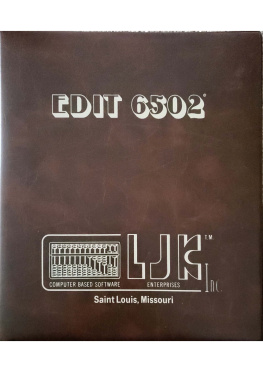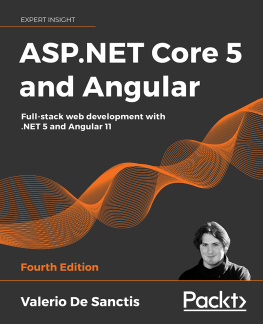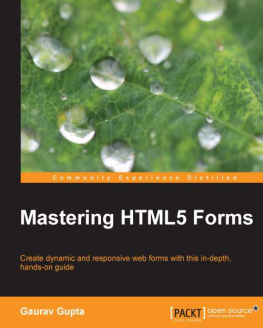Downloading the code
bundle and coloured images:
Please follow the link to download the
Code Bundle and the Coloured Images of the book:
https://rebrand.ly/eccf8c
Errata
We take immense pride in our work at BPB Publications and follow best practices to ensure the accuracy of our content to provide with an indulging reading experience to our subscribers. Our readers are our mirrors, and we use their inputs to reflect and improve upon human errors, if any, that may have occurred during the publishing processes involved. To let us maintain the quality and help us reach out to any readers who might be having difficulties due to any unforeseen errors, please write to us at :
errata@bpbonline.com
Your support, suggestions and feedbacks are highly appreciated by the BPB Publications Family.
Did you know that BPB offers eBook versions of every book published, with PDF and ePub files available? You can upgrade to the eBook version at www.bpbonline.com and as a print book customer, you are entitled to a discount on the eBook copy. Get in touch with us at business@bpbonline.com for more details.
At you can also read a collection of free technical articles, sign up for a range of free newsletters, and receive exclusive discounts and offers on BPB books and eBooks.
BPB is searching for authors like you
If you're interested in becoming an author for BPB, please visit www.bpbonline.com and apply today. We have worked with thousands of developers and tech professionals, just like you, to help them share their insight with the global tech community. You can make a general application, apply for a specific hot topic that we are recruiting an author for, or submit your own idea.
The code bundle for the book is also hosted on GitHub at In case there's an update to the code, it will be updated on the existing GitHub repository.
We also have other code bundles from our rich catalog of books and videos available at Check them out!
PIRACY
If you come across any illegal copies of our works in any form on the internet, we would be grateful if you would provide us with the location address or website name. Please contact us at business@bpbonline.com with a link to the material.
If you are interested in becoming an author
If there is a topic that you have expertise in, and you are interested in either writing or contributing to a book, please visit
REVIEWS
Please leave a review. Once you have read and used this book, why not leave a review on the site that you purchased it from? Potential readers can then see and use your unbiased opinion to make purchase decisions, we at BPB can understand what you think about our products, and our authors can see your feedback on their book. Thank you!
For more information about BPB, please visit
Writing the FormArray validator
We will write a validator that ensures no duplicate values exist in a If a user writes more than once the same value in an array form, the system will communicate back with an error message like the following figure:
Figure 4.4: Error message of an invalid FormArray
Before we start examining the code of this example, we should mention that the given FormArray will consist of FormGroup items and will look like this:
"colors": [
{"name": "Red"},
{"name": "Green"}
]
So, without any further ado, let's see how to create a function validator for a
validator code in file custom-validators.ts
1: import {AbstractControl, FormArray, ValidatorFn} from '@angular/forms'
2:
3: export function noDuplicates(property: string): ValidatorFn {
4: return (control: AbstractControl) => {
5: const formArray = control as FormArray
6: const hasDuplicates = formArray.value
7: .map((it: any) => it[property])
8: .reduce(
9: (acc: boolean, cur: any, idx: number, arr: any[]) => {
10: const hasDups =
11: arr.slice(idx + 1)
12: .some((it: any) => it === cur) || acc
13: acc = hasDups || acc
14:
15: return acc
16: }, false)
17:
18: return hasDuplicates ? {hasDuplicates: true} : null
19: }
20:}
21:
The example code is a bit complex, but we will go through this step by step.
We want to make sure that no duplicates exist in a and to make this happen, we will iterate the array items, and we will get the value of the property of the colors array.
In line 3, we create a function that accepts one argument: the FormControl name of the corresponding FormGroup of the FormArray items. In our example, the argument will be the
In line 4, we create the inner function, which accepts an AbstractControl argument, and has the actual validation logic.
In lines 5-16, we apply the validation logic. To ensure that no duplicates exist, we develop the logic using the and the JavaScript array functions.
In line 18, we return either null if the validator is satisfied or an object otherwise.
Using the FormArray validator
When we initialize a we define the AbstractControl instances as we have already learned. We can also provide the validators using the second argument of the array method, as we see in the following code:
Form Builder's array definition
1: array(
2: controlsConfig: any[],
3: validatorOrOpts?: ValidatorFn
4: | ValidatorFn[]
5: | AbstractControlOptions
6: | null,
7: asyncValidator?: AsyncValidatorFn
8: | AsyncValidatorFn[]
9: | null
10:): FormArray
11:
The first argument (line 2) is the and it's where we define the FormControl or FormGroup instances.
The second argument (line 3) is optional, and the type is which has the following signature:
AbstractControlOptions definition
1: export declare interface AbstractControlOptions {
2: validators?: ValidatorFn | ValidatorFn[] | null;
3: asyncValidators?:AsyncValidatorFn |AsyncValidatorFn[] |null;
4: updateOn?: 'change' | 'blur' | 'submit';
5:}
Let's now see how to apply the custom validator in a
component.ts code
1: import {Component, OnInit} from '@angular/core'
2: import {FormArray, FormBuilder, FormGroup} from
'@angular/forms'
3: import {noDuplicates} from './custom-validators'
4:
5: @Component({
6: selector: 'app-root',
7: templateUrl: './app.component.html',
8: styleUrls: ['./app.component.scss'],
9:})
10: export class AppComponent implements OnInit {
11: myForm!: FormGroup
12:
13: get colors() {
14: return this.myForm.get('colors') as FormArray
15: }
16:
17: constructor(private fb: FormBuilder) {}
18:
19: ngOnInit(): void {
20: this.myForm = this.fb.group({
21: colors: this.fb.array(
22: [
23: this.getFormArrayItem('Red'),
24: this.getFormArrayItem()],
25: {
26: validators: [noDuplicates('name')]
27: }
28: ),
29: })
30: }
31:
32: private getFormArrayItem(value?: string) {














